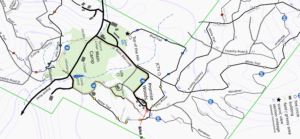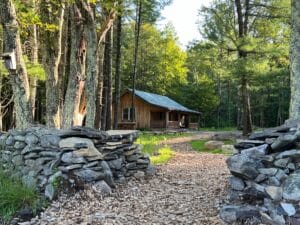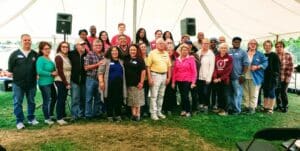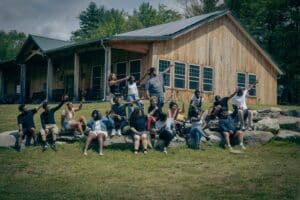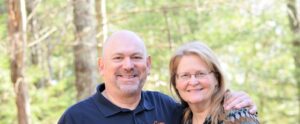This is Session 1 of the Prince of Peace: Jesus and Peacebuilding from the Election to the Holidays webinar series. (Click here to sign up for session invites.)
This session is about what we do with those in our lives who see things differently — even very differently. We do this using a paradigm from missions and peacebuilding of committing people to Jesus and releasing them so we can truly love them. MCC Peace Educator Nathan Toews talks about Peace Practices and how to use them in our lives, relationships, and organizations.
In this session: How I helped start a anti-vax, anti-masking, “alt-news” church during COVID though I’m none of those things. What the Native American Two-Rows Wampum (Gaswéñdah) teaches about inter-generational / inter-cultural / inter-modal. Does Jesus teaching on Old and New Wine in Luke 5 give us a model? Can we look to Paul’s teaching in Romans 14 for an example? How the mission concept of distinguishing between planting seeds and trees could help. Plus resources for using the Peace Practices where you are.
Session Notes
Here’s some of the things mentioned in this session that you can explore on your own. Please remember that Camp offers these links and resources as explanatory documents as part of a conversation that includes some hard questions worth asking and sharing them here does not imply an endorsement or official position of Camp, it’s board, staff, or constituents. We are a diverse community whose position is peace and work is love!
The “Crunchy” Sub-Culture
The church planting project I mentioned was among families led by women who called themselves “crunchy moms”. This is a particular sub-culture of family-focused people who believe that our current industrially-supported life systems are less good for themselves and their children than more “organic”, “healthy”, and “natural” systems. Many people in this sub-culture extend this to education, play, health care, and food. They tend to be well networked with “like minded” people and Internet-empowered in terms of researching and sharing information.
If you’d like to know more about this sub-culture, a good place to start is to explore for yourself:
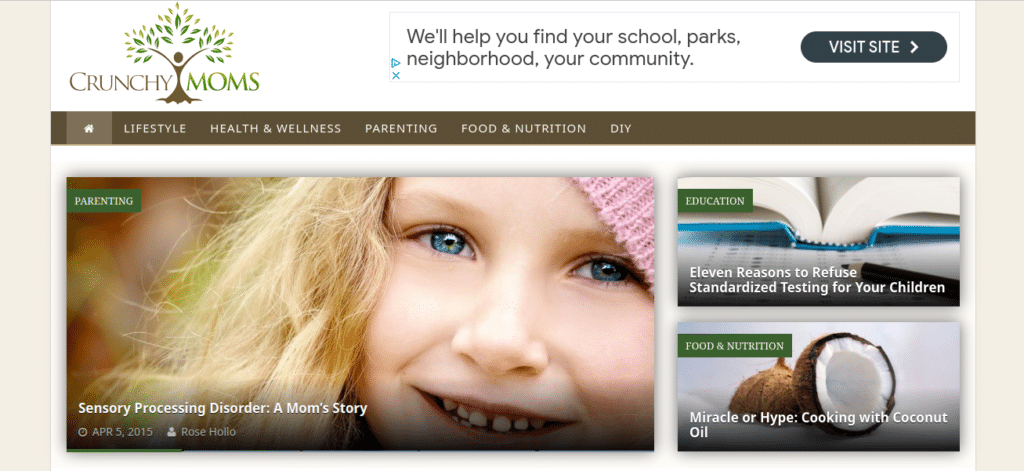
While ChunchyMoms.com is definitely an insiders look into the subculture, it would be fair to say there are critics out there.
BIG POINT: Sometimes you have to want to love and be useful more than you want to be right. There’s work to do in your relationships and spheres of influence that God is likely going to assign to you and He probably won’t take your reservations about their ideas or beliefs as an excuse.
The Two-Rows Wampum (Gaswéñdah)
The Two-Rows Wampum is a symbolic representation of the 1613 treaty between the Iroquois or Six Nations (Haudenosaunee) and successive groups of European traders and settlers.
After many discussions, it was decided that the Haudenosaunee and the Europeans must have a way to greet each other when they meet. The settlers with their large sailed boat thought that they should be called “Father” and the Haudenosaunee “Son.” The Haudenosaunee said that this would not do. “We shall address each other as ‘Brothers.’ This shows that we are equal to each other.”
As the Haudenosaunee and Dutch discovered much about each other, an agreement was made as to how they were to treat each other and live together. Each of their ways would be shown in the purple rows running the length of a wampum belt. “In one row is a ship with our White Brothers’ ways; in the other a canoe with our ways. Each will travel down the river of life side by side. Neither will attempt to steer the other’s vessel.”
The Haudenosaunee and the Dutch agreed on three principles to make this treaty last. The first was friendship; the Haudenosaunee and their white brothers will live in friendship. The second principle is peace; there will be peace between their two people. The final principle is forever; that this agreement will last forever.
From “Two Row Wampum – Gaswéñdah” Onondaga Nation: People of the HIlls https://www.onondaganation.org/culture/wampum/two-row-wampum-belt-guswenta/
The two videos below also tell the story of the belt:
I’ve always wondered what would have been possible if the Europeans would have shown more respect and collaboration to the cultures they encountered in the Americas. In my opinion, perhaps some of the biggest problems of our current time could have been avoided.
BIG POINT: When we act like our stream is the only one, we miss out on opportunities: for them, for God, and for ourselves. On the other hand, when we allow people and groups we have relationship with to be self-directed and we find principles and values important to all of us, there are amazing opportunities to learn and grow from each other.
The Luke 5 Model
When Jesus was criticized when his religious practices diverged from the “norm”, he offered this wisdom:
Can you make the friends of the bridegroom fast while the bridegroom is with them? 35 But the days will come when the bridegroom will be taken away from them. Then they will fast in those days.” 36 He also told a parable to them. “No one puts a piece from a new garment on an old garment, or else he will tear the new, and also the piece from the new will not match the old. 37 No one puts new wine into old wine skins, or else the new wine will burst the skins, and it will be spilled, and the skins will be destroyed. 38 But new wine must be put into fresh wine skins, and both are preserved. 39 No man having drunk old wine immediately desires new, for he says, ‘The old is better.’”
Luke 5:34-39 WEB
When I was younger, I had huge prejudices against “old” and “traditional” because I thought of myself as “innovative” and “cutting-edge”. So, I read this advice in a very biased way. Notice how Jesus shows common-sense care for both “new streams” and “old streams”. His advice, IMHO, boils down to:
- Don’t take energy that a new thing needs in order to bring a fad to something old where it won’t fit (and may be destructive).
- Don’t try to contain new things in old vessels or you’ll ruin both. With new ideas, the container must stretch and grow with the contents — but mature ideas can use the standard, established container.
- Don’t offer innovations to people for whom their thing is working. They won’t see the value until their “tastes” change. Though, they may in time want something new or the environment may demand a different kind of wine.
I think it’s helpful to apply these as principles to the following “inter-s”:
- Inter-generational: How do we support and give space for the next/previous generation to explore their own solutions to faith and the problems of their times? Do we over-burden them with maintaining “our thing” and then suffer the consequences when they want to move on? Do we allow changes that don’t fit in order to be “relevant”, when we should be instead offering resources for them to launch something new?
- Inter-cultural: (note: I view political parties as coalitions of sub-cultures) Wine and clothes — old or new — are for people. Do we allow both “old-timers” and “newcomers” to try to take care of people in their own way, or do we impose our way of taking care of people on everyone? When other’s try to impose their systems of care on us in a way that doesn’t fit, do we argue we’re a different and unique stream that should be respected or only respond by absolutely condemning their stream?
- Inter-modal: By mode — I mean new and old modes or models of doing things; like new forms of church, community, or school. Are we spending time and energy applying new patches to old garments, but they just seem to complicate the problem? Do we carve out a portion of space and resources to let the new things and their modes stretch as they grow? Can the new modes avoid the arrogance of thinking what they have is a “better vintage” — right now it may not be, but that doesn’t mean the new vintage won’t be great when it matures?
BIG POINT: Its not wise or healthy to to one-stream everything. Are you happy in your stream? Good. But try to leave room and support other streams and projects. Are you trying something new or different? Great. Can you see the value in the things that have come before?
Paul and Romans 14
Paul was dealing with a thorny issue in his time: eating meat after it had been involved in Roman religious rites. For some, this was a spiritual issue that resulted in spiritual contamination. For others, it was just meat. Paul gives these instructions:
Now accept one who is weak in faith, but not for disputes over opinions. 2 One man has faith to eat all things, but he who is weak eats only vegetables. 3 Don’t let him who eats despise him who doesn’t eat. Don’t let him who doesn’t eat judge him who eats, for God has accepted him. 4 Who are you who judge another’s servant? To his own lord he stands or falls. Yes, he will be made to stand, for God has power to make him stand.
Romans 14:1-4 WEB
We need to be careful not to translate this to absolute moral, ethical, and cultural relativism. Pretty much everyone believes some things are good/beneficial while others are evil/harmful. For example, we may believe that a liberal free-market democracy is better than a atheist soviet dictatorship or that trafficking humans in any form is wrong. There are moral, ethical, and cultural systems that support authoritarianism and slavery — and for many of us, it would be wrong not to try to intervene in that.
But most of us also agree, in humility, that there should be some diversity in this world. The thing is, one feature of really believing is that you’ve chosen it because you think it’s better. That makes it hard not to think people who make different choices are automatically wrong. But in truth, in many cases there could be a “both, and” instead of an “either, or”.
The point, in my mind, is helping people find integrity within their own system. If I guilt, force, or pressure someone to do “God’s will”, has the Kingdom of God really come into their life? I believe, as many Anabaptists, that any confession of the Kingdom that isn’t a free choice is not really the Kingdom. This was a fundamental position many our fore-bearers were willing to die for. I still hold to it: if you do something just because I say or make you, by Kingdom standards, I’ve lost. But if you do it because you love God and people and so you choose it, by Kingdom standards, we’ve all won.
If God can make someone stand, even if they have a different view than us, that actually is very freeing. It means that God will do the work of saving people and we don’t have to. We can just love them. In my opinion, this teaching implies we still have to be concerned with who is their Lord, and whether they listen to him, but that’s a lot better than being stressed out with all the many ways they may be different.
BIG POINT: It’s OK to release people into God’s care. He can take care of them. Doing so frees us to focus on loving in the moment and doing good where our lives intersect. We can say to people, “listen, we may be different, but I see what you’re trying to do. God bless you! How can I help?”
Planting Seeds Not Trees
In missions, they taught me about early efforts to spread the Gospel to new people that involved trying to plant complete European Christendom in their lives right down to the clothing. This is like trying to plant a full grown tree — all 40 tons of it. You’re just going to use a ton of resources and make a huge mess.
It would be wiser to plant a seed. A seed takes very little resources and make a very small hole. Yet, it will grow woven perfectly into its context. So in missions we started to just plant seeds of following Jesus — the basic DNA of identity in him, with just enough support to take root, and then we stood back and let it take off. Where we’ve done this well, it has produced movements.
What if we applied this to our whole lives? If we planted seeds instead of trees and see how they grow, even in soils and streams that are very different from our own. Think of the power of this towards your co-workers, your children, your neighbors, and the people you are starting to notice that aren’t very much like you?
Jesus in Action: The story of the Woman at the Well (John 4:4-42) is an amazing example of all we’ve been talking about. By custom, Jesus shouldn’t have even had this conversation. But he did, and the results were life-changing. He didn’t avoid being direct about what really mattered, but he refused to be pulled into the conflict between the Jewish and Samaritan streams — a conflict rooted in bitter ethnic, economic, and political strife. He began by connecting with basic humanity to stir connection and curiosity. Then he demonstrated with empathy he could see the reality of the tension she lived in. He focused on the spiritual realities that really mattered and engaged her in the hope of the transformation of her destiny. Together they created something amazing for Sychar.
Challenge
From now till Thanksgiving, try to mark every conversation, statement, or idea about a person or group of people who are different that causes you to feel even a little fear, anxiety, or disgust. Shift your feelings by considering the values of the Peace Practices:
Curiosity. Be curious, inviting a diversity of ideas and opinions.
Discovery. Focus on what matters.
Engagement. Invite the best in yourself and others.
Dialogue. Listen together for insights and deeper questions.
Empathy. Seek to understand rather than persuade.
Authenticity. Speak from the heart, contributing your own thinking and experience.
Dignity. Consider power dynamics.
Transformation. Welcome creativity.
(From Peaceful Practices: A guide to healthy communication in conflict, pg 9)
Even if you can’t engage the person or group inter-personally, does doing this change how you feel and make you more ready to show love or seek some kind of collaboration for the common good? I find, even if I only do this in my head, I suddenly imagine all these possibilities I couldn’t see in my anxiety and fear.
Resources
Nathan Toews, Peace Education Coordinator at Mennonite Central Committee (MCC) US, offers these great resources for us to continue our journey:
Peaceful Practices: A guide to healthy communication in conflict — (Spanish & English | Download PDF / Order Print Copies) This curriculum is great for Sunday schools and youth groups. It’s process oriented and helps people discover how to talk to each other about tough issues.
FEAR NOT: Creating a plan to respond to active violence — (Download PDF) Created in partnership with RAWtools, this curriculum and process guide helps communities balance safety and a commitment to nonviolence in possible situations of active violence. This is an example of a conversation process where the safety-minded and non-violent camp find appreciation and common ground to create safety for all. RAWtools Philly and The Simple Way are offering a Peacemaker Summit November 22-23 in Philly.
Meta
Where did the title come from? “Releasing and loving” is my language about giving space for people to find their own journey with God. “The Other Side” comes from a 2020 essay by Ken Bontrager of that title concerning Race and Diversity. In that essay, Ken describes our positions and experiences as a certain side of a metaphorical coffee cup, but before we make assumptions, we need to see “The Other Side.”
Share:
You Can Always Come Home
In the pursuit of mission, I’ve moved around a lot as an adult. To be perfectly honest, I haven’t found a place since Mom and Dad’s house that I felt was mine — a place I could call home. If you find yourself longing for home, you’re in some pretty good company. It says in…
Map Makers Project
Camp is a big place and we have some big plans. But this raises a big question: Just where is everything? In the past, we asked around and maybe somebody would know. Now, we’d like to get all that information down on a map. We’ll use it to maintain the grounds, plan maintenance projects, and…
Welcoming Wisdom: Cabin 2 Opens in Promise Woods
We’re very pleased to announce that Cabin 2 “Wisdom” is now open in Promise Woods for retreat groups and other guests. Wisdom is our 5th (of 6) bunk cabin to be completed and it sleeps 10 in the spacious bunk room and two more in the cozy bedroom. Like all of our camper-style cabins, it…
Homecoming $20k Match: Investing in Camp is investing in each other!
When someone gives a gift to Camp, they’re not just supporting our organization. Their gift is actually an investment in the life of our community of churches. They are demonstrating their faith in the vision Jesus has of life together: that our fellowship has the power the change us and the world. In this faith,…
Signs and The Summer Camp High
Some people talk about “The Summer Camp High” as if it’s not real. I have to admit, I did too. It’s an easy target: people come back buzzing with energy and excitement and ready to be really spiritual and maybe even change the world. But by the time school starts again, where has all that…
Get Your Hands Dirty: Facilities Position Opening
Camp is an amazing place for fellowship and ministry. But it only stays that way due to tireless and creative work of our dedicated Maintenance Staff. We’re looking for a Team Member who will take on the care of our buildings, equipment, and grounds as a ministry to the youth, families, and churches of New…
- « Previous
- 1
- 2
- 3




